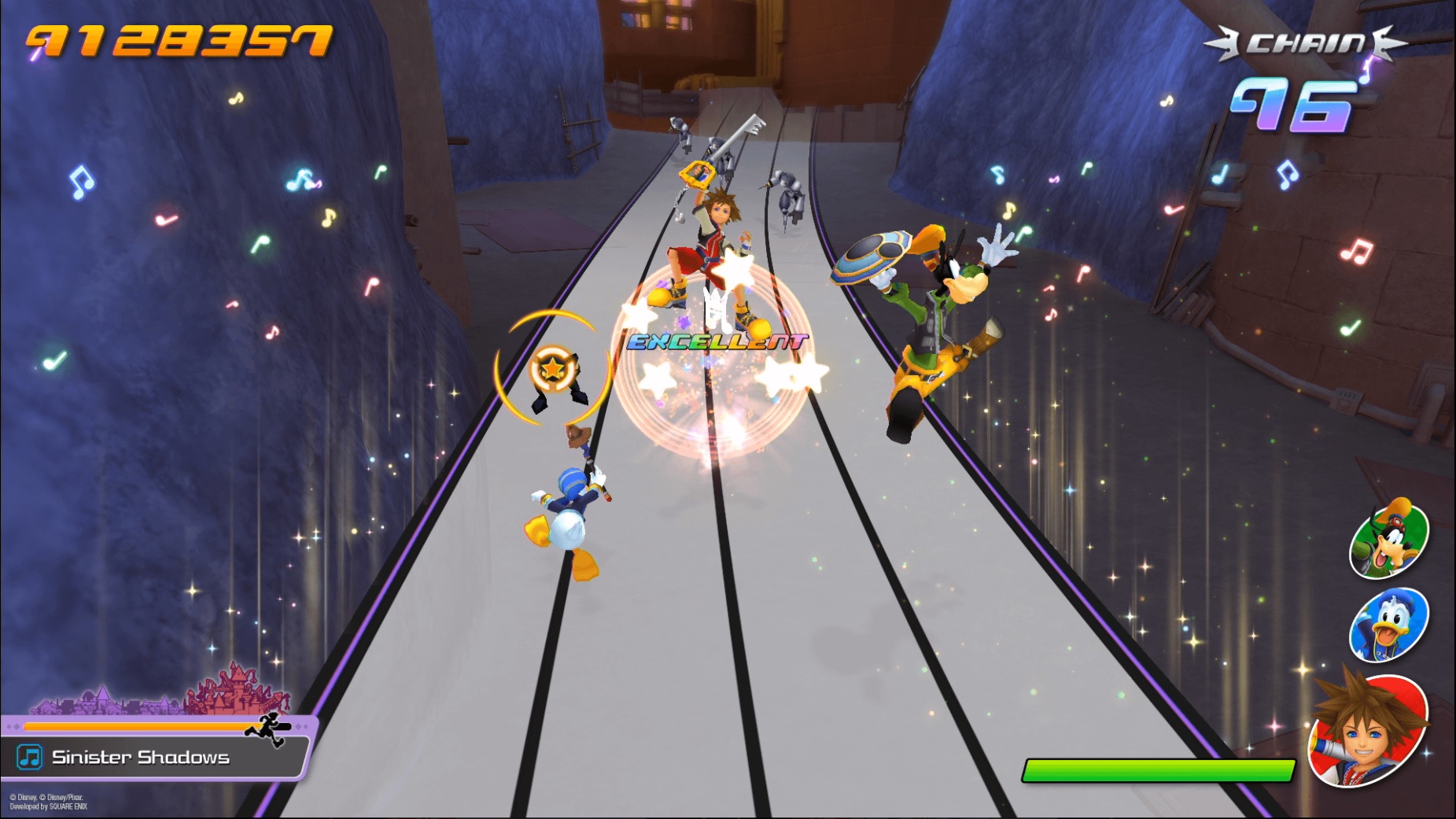Kingdom Hearts: Melody of Memory hands-on: RPG meets rhythm game
Kingdom Hearts: Melody of Memory is a strange mix, but it plays well

Kingdom Hearts: Melody of Memory is the latest entry in a series that tends to do its own thing, confounding fan expectations as it goes. Instead of the next proper installment in the Kingdom Hearts series, Melody of Memory is a rhythm game that revisits some of the best music in Square Enix’s long-running Disney mashup. While your enjoyment of the game will depend almost entirely on how much you like Kingdom Hearts’ soundtrack, there’s no denying that Melody of Memory accomplishes exactly what it sets out to do.
I played through a demo of Kingdom Hearts: Memory of Melody, which will be available for free on PS4, Xbox One and Nintendo Switch within the next few days. (The full game will debut on November 13, and cost $60). The demo is pretty spare, with only a few songs and no story mode to speak of. However, it did give me a good idea of what to expect from the gameplay, with three selectable difficulties and a peek at how character-building works.
- What is Kingdom Hearts? Gaming’s most convoluted crossover, explained
- Play the best PS4 games
Kingdom Hearts: Melody of Memory impressions
If you’ve played a rhythm game before, the core principles of Memory of Melody should be pretty simple. You take control of the usual Kingdom Hearts protagonists — Sora, Donald and Goofy —as they automatically advance across three lanes of scrolling enemies and obstacles. Your job is to time button presses with the music to make the three heroes attack, jump, glide and use special abilities.
Like a lot of rhythm games, the gameplay is simple in theory and complex in practice. On the PS4 controller, you use the L1, X and R1 buttons to attack, the circle button to jump and glide and the triangle button to activate special abilities. On Beginner difficulty, when enemies come one at a time in each lane, power-ups have lots of lead time and most enemies go down in a single hit, all you have to do is pay attention to the rhythm and remember which buttons to press.
Move the difficulty up to Standard, however, and multiple enemies will crowd the three protagonists, while minibosses that take multiple hits to defeat will jump from lane to lane. Keeping track of three heroes, dozens of enemies and trying to find jump points and power-ups underneath everything can feel like an extremely chaotic game of Simon. Proud mode ups the difficulty even further.
Kingdom Hearts: Melody of Memory RPG elements
What differentiates Melody of Memory from other rhythm games is that it’s not purely skill-based. As you complete levels, Sora, Donald and Goofy will gain experience and level up. This increases their health, attack, defense and so forth, meaning that enemies go down a little easier, and missed cues aren’t as disastrous. While I doubt you can brute-force the entire game this way, it’s at least a way to keep the sausage-fingered among us engaged.
The big question, though, is whether you enjoy the music in the Kingdom Hearts series enough to play through a rhythm game based on its music. (Don’t forget — with three difficulty settings, you’ll probably be listening to each track at least three times.) Every KH fan knows “Simple and Clean,” the series theme song, but how many individual level tracks can you hum offhand? As I played through tracks from levels like Alice in Wonderland and Sleeping Beauty’s Castle, I found the music recognizable. But playing through it didn’t fulfil any kind of musical fantasy, the way Guitar Hero or Fuser might.
Memory of Melody may not be what Kingdom Hearts fans expected to play next, but like most KH spinoffs, it’ll probably advance the story in some small but significant way. For now, I can say that the game is fun to play and has the potential for some depth, but you’ll have to really like the music going in.
Sign up to get the BEST of Tom's Guide direct to your inbox.
Get instant access to breaking news, the hottest reviews, great deals and helpful tips.
Marshall Honorof is a senior editor for Tom's Guide, overseeing the site's coverage of gaming hardware and software. He comes from a science writing background, having studied paleomammalogy, biological anthropology, and the history of science and technology. After hours, you can find him practicing taekwondo or doing deep dives on classic sci-fi.

